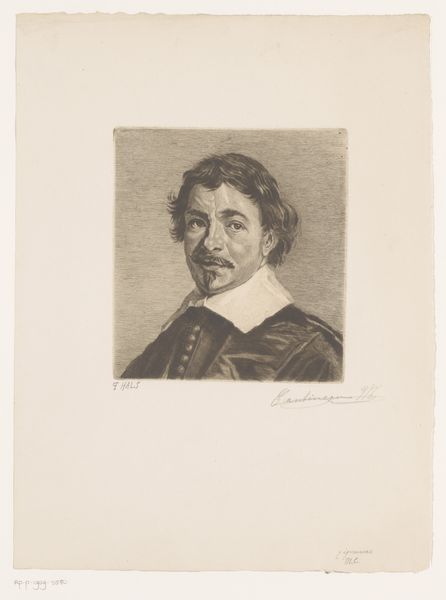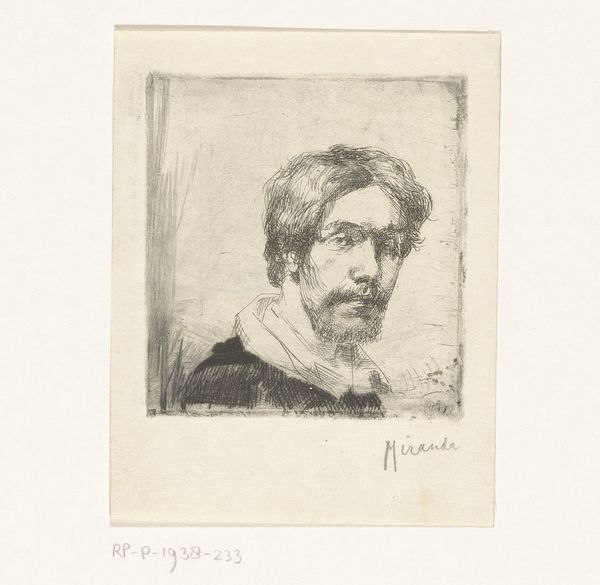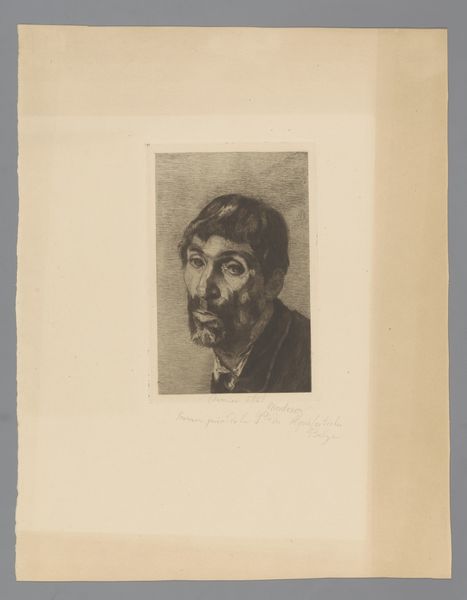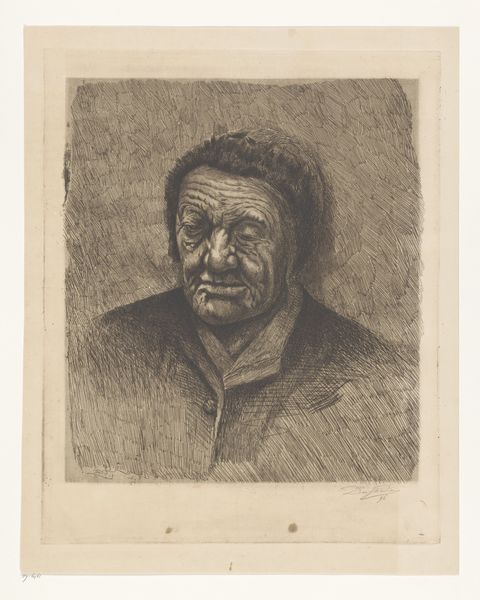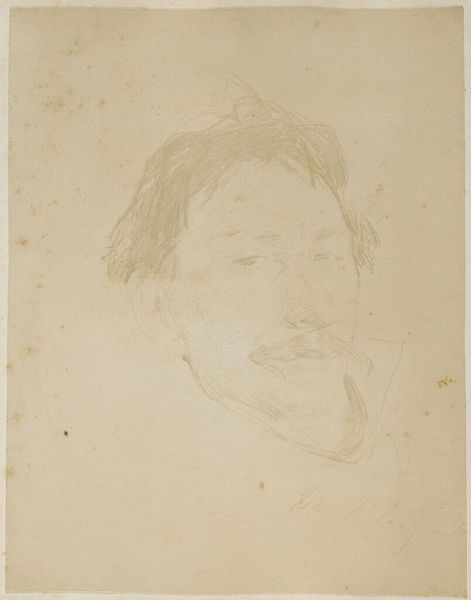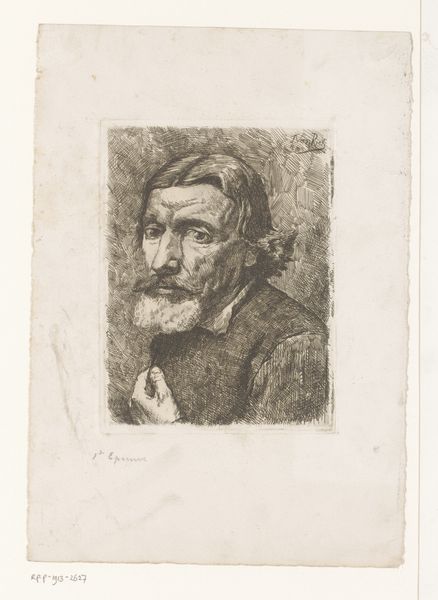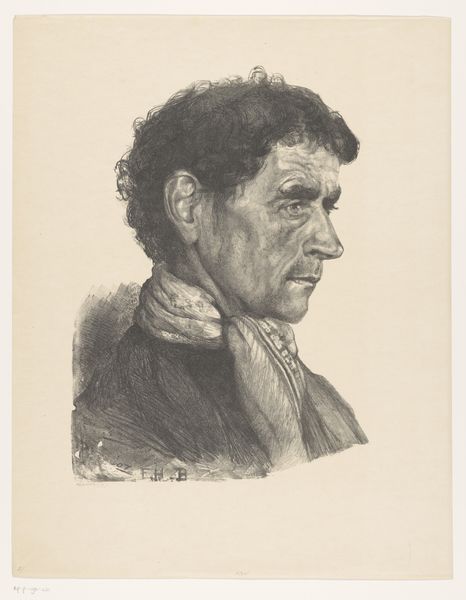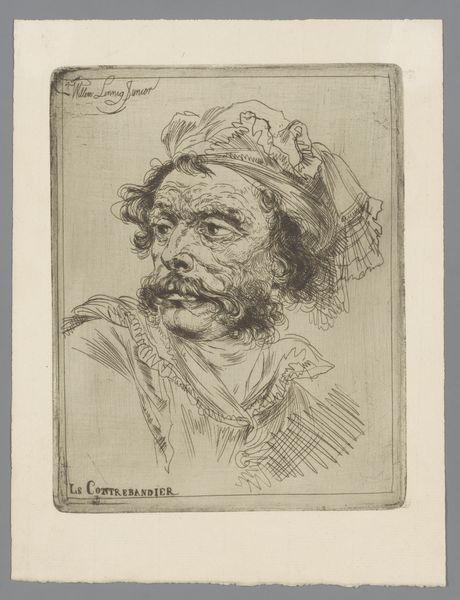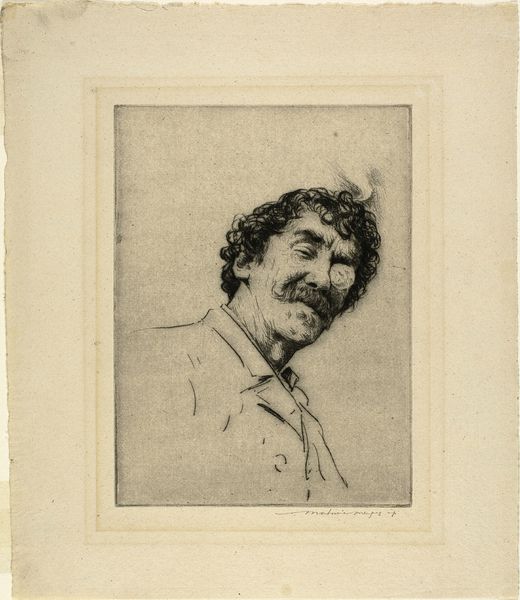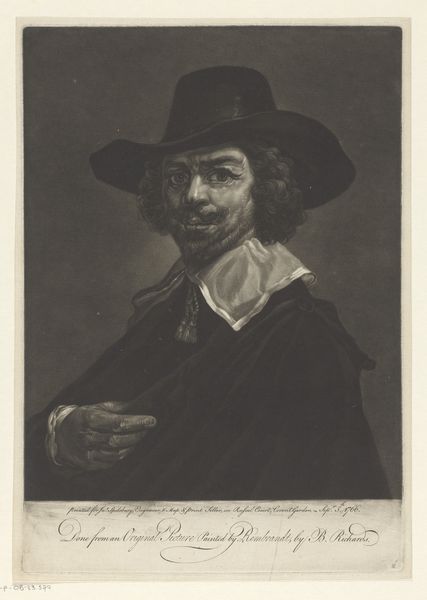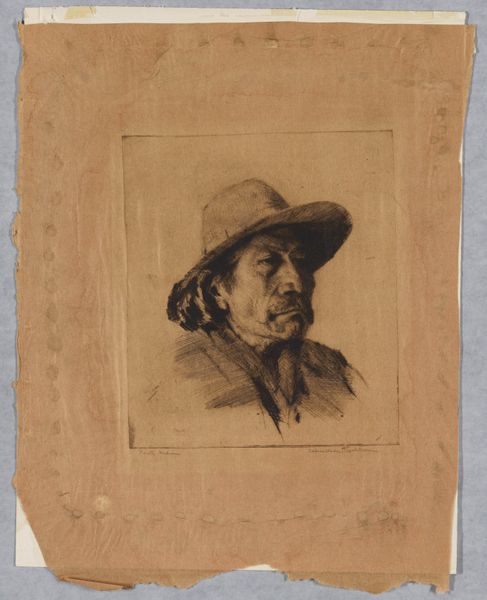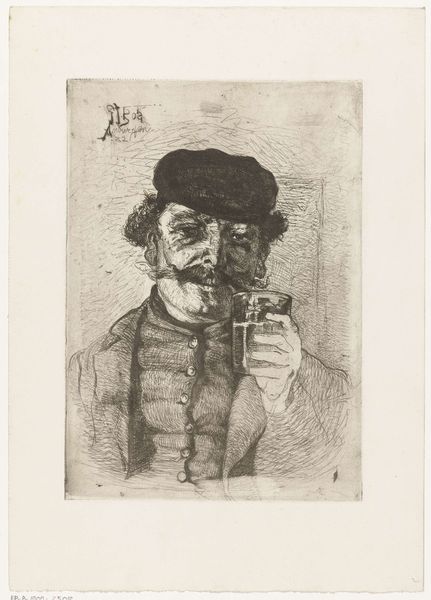
print, etching
#
portrait
# print
#
etching
Dimensions: height 167 mm, width 153 mm
Copyright: Rijks Museum: Open Domain
Editor: This is a print called "Portret van Frans Hals, naar een zelfportret," created between 1885 and 1909 by Mary Hector Rupert Cantineau. It’s an etching, and I’m struck by how much texture the artist was able to achieve using only line work. What formal elements stand out to you? Curator: The artist demonstrates a compelling manipulation of light and shadow. Observe the density of the etched lines in the darker regions of the coat and hair, juxtaposed with the comparatively sparse lines delineating the face. This creates a sense of depth and volume. Notice also the compositional balance, the artist contrasts the precise details on the face, with the suggestive sketchiness on the dress, making you wonder if this was on purpose? Editor: Yes, I hadn't noticed that—it's like the dress is unfinished, almost abstract. But, going back to the face: How does the mark-making there contribute to the portrait's impact? Curator: The meticulousness around the eyes and mouth invites closer inspection. The artist captures a particular expression through the interplay of lines, conveying, perhaps, a sense of introspection or even melancholy. The cross-hatching is carefully placed to sculpt the features, adhering to established artistic conventions for rendering the human form, giving the character weight. Do you find these visual elements support a particular interpretation? Editor: I see what you mean, the careful line work creates a focused, weighty image. The interplay between detail and suggestive abstraction is so unique. I didn't notice that until now. Curator: Indeed. Formal analysis reveals that Cantineau’s expertise is quite unique in translating painting into line.
Comments
No comments
Be the first to comment and join the conversation on the ultimate creative platform.


